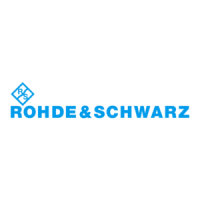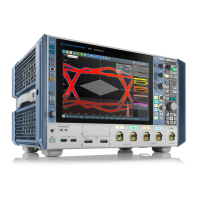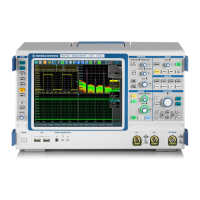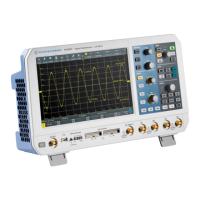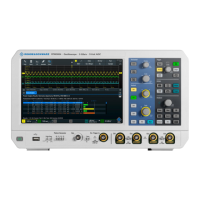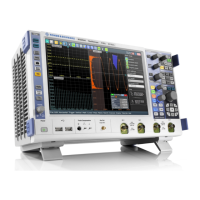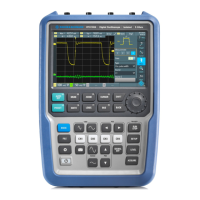Acquisition and waveform setup
R&S
®
RTE
172User Manual 1326.1032.02 ─ 20
When you set up horizontal parameters, you can choose whether the record length or
the resolution remains constant.
●
With constant resolution, increasing the time scale also increases the record
length, and vice versa. You can limit the record length to a maximum value.
●
With constant record length, increasing the time scale coarsens the resolution, that
is, the time between two waveform samples gets longer.
For both settings, the "Auto adjustment" ensures a sufficient resolution to prevent
undersampling.
5.1.3.2 Horizontal position
As described before in Chapter 5.1.2.3, "Acquisition control", on page 170, the trigger
is the determining point of the waveform record.
In many scenarios, you want to analyze the waveform some time before or after the
trigger. To adjust the horizontal acquisition window to the waveform section of interest,
you can use the following parameters:
●
The horizontal position defines the time distance from the trigger point (the zero
point of the diagram) to the reference point. Changing the horizontal position, you
can move the trigger point, even outside the screen.
●
The reference point is the rescaling center of the time scale on the screen. If you
modify the time scale, the reference point remains fixed on the screen, and the
scale is stretched or compressed to both sides of the reference point.
5.1.4 Probes
A probe connects the signal source (DUT) to the oscilloscope, and delivers the signal
to be measured. It is the essential first link in the measurement chain.
Basics
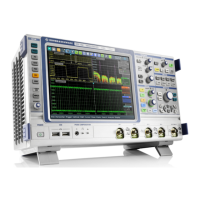
